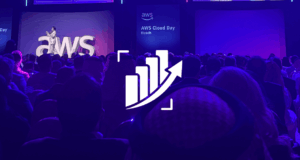Less than a decade ago, business decisions were made in boardrooms over spreadsheets, countless meetings, and endless brews of coffee pots. Today, they are happening in seconds, no milliseconds – inside algorithms, neural networks, data pipelines, and using a UI.
Not long ago, people thought AI was just a hype and even long before that people thought AI was just in movies and sci-fi novels. Nowadays, it is not coming for the future – it’s already embedded in today’s smartest businesses, and intertwining deep into their DNAs. From billion-dollar algorithms optimising every click and every recommendation, to behind the scenes AI innovations that are reshaping functions and transforming businesses inside out.
Integrating AI into business operations has become a strategic imperative in 2025; companies leverage AI aiming to enhance efficiency, drive innovation, and maintain a competitive edge. Companies that are not aligning with today’s AI standards are considered outdated, and even losing their competitive edge; all companies, no matter the scale are being hit hard if they are not properly including AI in their ecosystems – a prime example is Apple where it has been heavily criticised and facing tremendous backlashes due to the quality of Apple Intelligence and Siri’s AI capabilities compared to other platforms including but not limited to Google Gemini.
Wide Spread Adoption
As we have covered, AI is taking businesses by storm – it was estimated that as of 2025, 78% of companies are reporting the use of AI in at least one business function, which is a 23% increase from 2023 alone. Not to mention that 71% of organizations have integrated generative AI tools into their operations which was increase from last year’s 65%.
More and more investments and deals are being done by the day to increase the capabilities of AI – Global venture capital investment in AI startups alone exceeded 131.5 billion dollars in 2024 marking a 52% increase form 2023. Major companies themselves, are making a stand and investing absurd amounts in building AI infrastructures that accommodate the increase in demands.
To highlight more on the infrastructure sides, Microsoft allegedly is committed with an 80 billion dollar to enhance AI infrastructure in fiscal 2025, and Meta platforms increased the expenditures to between 64 and 72 billion dollars to expand their AI capabilities.
Innovations
With all these investments, time, and labour, companies were able to develop innovative AI integration strategies to align with “Today’s AI Standards”. AI factories were built to accommodate large platforms – Uber and Netflix invested heavily in AI factories to have centralised systems to continuously process data top optimise their services from personalised recommendations dynamic pricing.
The marketing and Advertising sectors are being engulfed with AI as well. Companies like Nike, BMW, Coca-cola, and many more are utilising AI to create personalised and creative marketing advertisements to fit their products and business needs. All of this while keeping in mind that myriad of AI tools are still in under development, yet still producing targeted and engaging marketing campaigns.
Cost Reduction in financial operations is another factor for businesses deeply investing in AI. Norway’s sovereign wealth fund optimised their trading strategies aiming to save millions of dollars in transactions cost reduction through predictive analysis; financial cost reductions for businesses are happening in the cloud as well where cloud providers such as AWS are able to give predictive insights through services like AWS Trusted Advisor over the client’s infrastructure and provide AI recommendations to decrease them.
Famous Integrations
AI integrations are becoming countless by the day, hence it will be impossible to list all of them. But, some integrations are considered notable more than the others based on the amount of money invested, time, and effort.
Meta platforms are on the top of list when it comes to AI efforts. They leveraged AI to improve ad targeting, resulting in an increased user engagement across all their platforms including Facebook, Instagram, and Threads. Their CEO Mark Zuckerberg told investors “AI has already made us better at targeting and finding the audiences that will be interested in their products than many businesses are themselves, and that keeps improving,”
Microsoft is another company that leveraged AI into its Azure cloud services, where it was noted that the revenue growth in this segment in particular increased by 33%. Cognizant, is another company that jumped into the AI race, where it developed an AI agent using Vertex AI and Gemini aimed to assist legal teams in drafting contracts and assessing risks.
Challenges in the Implementation
Despite the rapid growth of artificial intelligence and the increase in artificial intelligence driven innovation and revenues, many companies are still struggling to realize meaningful returns on their investments, not to mention integrate these tools effectively into their operations.
In fact, 74 percent of organizations report difficulty in scaling value from artificial intelligence initiatives. While it is tempting to attribute this to technical complexity, the root causes are often organizational: misaligned processes, lack of internal readiness, and resistance to change.
Nevertheless, technical challenges do play a critical enabling role. Poor data quality, characterized by bias, inconsistency, or inaccuracy, undermines trust and results in flawed decisions. At the same time, a global shortage of artificial intelligence talent makes it more difficult to build and maintain effective solutions, especially in environments that lack internal expertise and structured support.
More importantly, adopting artificial intelligence requires more than just technical adjustments; it requires a cultural transformation. Employee resistance, often driven by fears about job security or discomfort with new technologies, can stall even the most well-funded initiatives. Addressing this requires clear communication, focused training, and visible commitments to job evolution and upskilling.
Wrapping up
Today’s competitive edge is AI, as we stand in the cross roads between automation and augmentations, the businesses tend to thrive in AI will be those bold enough to innovate and wise enough to integrate AI fully and benefit from AI’s potentials and values. It is time for businesses to bridge the gaps of their businesses to leverage AI, weave AI into their operations fabric to unlock new efficiencies, insights, and innovations.
Yet, this opportunity is turning into a responsibility, companies must navigate challenges in data quality, ethical dilemmas, talent shortages, and many more to fully unlock what AI promise us. As we move deeper into the AI-driven era, the question is no longer whether to adopt AI, but how boldly and how wisely you will use it to transform your future and turn your goals into a reality.






